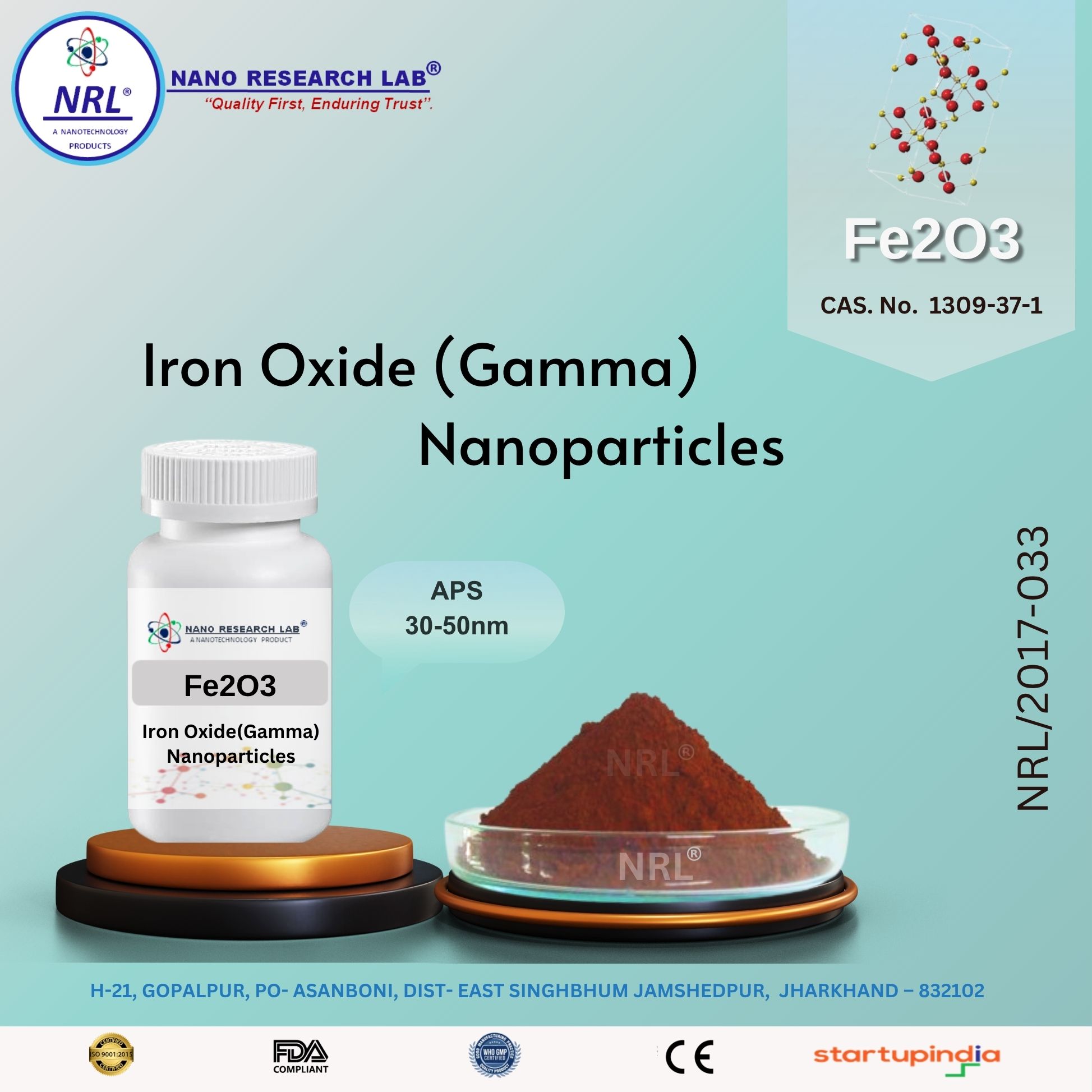
Iron Oxide Nanoparticles/Nanopowder (Fe2O3, Gamma, 30-50nm, purity 99.5% )
₹1475.00
Iron Oxide Nanoparticles / Nanopowder (γ-Fe₂O₃, 30–50 nm, Purity 99.5%)
Technical Specifications
Property | Specification |
|---|---|
Chemical Name | Iron(III) Oxide (γ-Fe₂O₃, Maghemite) |
CAS Number | 1309-37-1 |
Molecular Weight | 159.69 g/mol |
Purity | ≥ 99.5% |
Appearance / Color | Dark Red / Brown Fine Powder |
Particle Size (Average) | 30–50 nm |
Morphology | Nearly Spherical / Irregular |
Crystal Structure | Cubic Spinel |
Density | 4.9–5.1 g/cm³ |
Specific Surface Area (BET) | 35–70 m²/g |
Melting Point | 1565 °C (decomposes) |
Boiling Point | Decomposes above 2000 °C |
Solubility | Insoluble in water; soluble in strong acids |
Magnetic Properties | Ferrimagnetic |
pH (in aqueous suspension) | ~7.0 |
Stability | Chemically stable under ambient conditions; non-hygroscopic |
Key Features
High Purity (≥ 99.5%) ensures reliable chemical and physical performance.
Controlled Nanoparticle Size (30–50 nm) for high surface area and reactivity.
Cubic Spinel Structure (γ-phase / Maghemite): Ferrimagnetic with superior magnetic properties.
Dark Red / Brown Fine Powder: Easy to disperse in liquids, polymers, and composites.
Ferrimagnetic Nature: Strong magnetic response suitable for magnetic applications.
Uniform Morphology: Facilitates homogeneous mixing and consistent performance.
High Surface Area: Enhances catalytic, adsorption, and magnetic activity.
Applications
1. Magnetic Applications:
Used in ferrofluids, magnetic inks, magnetic recording media, and magnetic resonance imaging (MRI) contrast agents.
Ideal for biomedical magnetic applications such as hyperthermia therapy.
2. Catalysis & Chemical Processes:
Serves as a catalyst or catalyst support in oxidation and redox reactions.
Useful in environmental catalysis and pollutant degradation.
3. Pigments & Coatings:
Dark red-brown pigment for paints, coatings, ceramics, and plastics.
Provides thermal and UV stability.
4. Environmental & Water Treatment:
Functions as adsorbent for heavy metals and contaminants in water treatment applications.
5. Nanotechnology & Advanced Materials:
Applied in nanocomposites, energy storage, and spintronic devices.
Suitable for research in magnetic nanoparticles, sensors, and catalysis.
6. Biomedical Research:
Explored for drug delivery, biosensors, and magnetic separation in laboratory studies.
